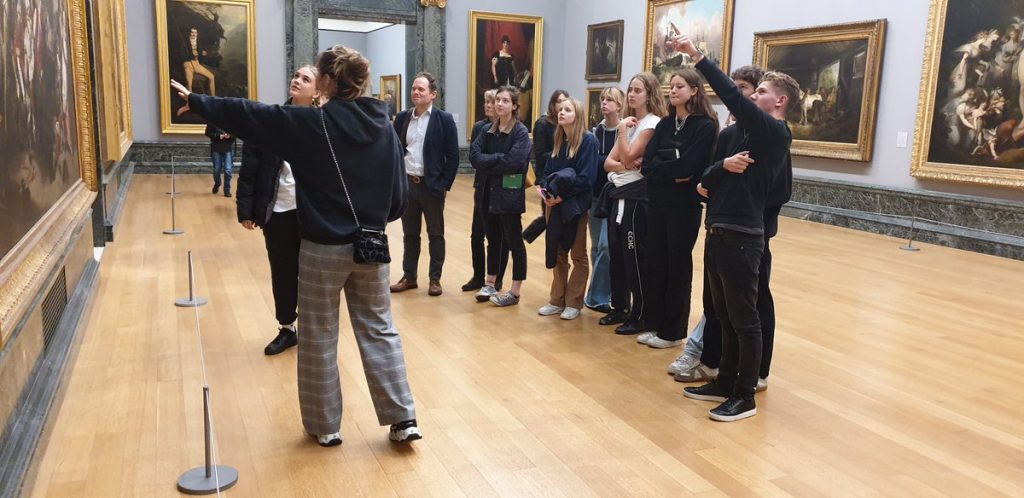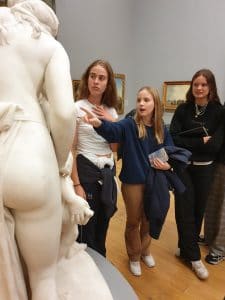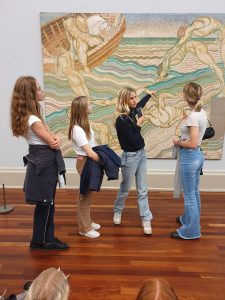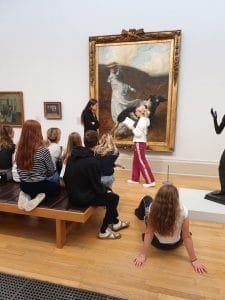
The History of Art Department enjoyed a day at Tate Britain, combining some visual analysis presentation work in the permanent collection with a visit to the ‘Van Gogh in Britain’ exhibition.
We had an interesting mix of works from the collection in pupil presentations and a real insight into so much of Van Gogh’s life and works in the afternoon.
While the exhibition’s starting point was the influence of Van Gogh’s short stay in Britain, the display was a feast of Van Gogh’s paintings – a reminder of how you can only really appreciate this artist when you see his works in the flesh.
Here are some reflections on the day from Bradfield’s History of Art pupils:
“When we first arrived at the Tate Britain, we walked around the gallery choosing art works from the 14th century through to the 20th century to analyse and present to the group.
We saw photography, painting and sculpture but none of this could compare to the Van Gogh exhibition; I was blown away by his iconic paintings. His style of work was so different in the originals, his brushwork and colour was so distinctive.
All his paintings and drawings where amazing, but my favourite was Horse Chestnut Tree. I loved this image because there was a wonderful sense of windswept movement that you experienced from the spontaneous brushwork and heavy, impasto paint affects.”
Ella (M)
“The highlight of the trip was the Van Gogh exhibition in Tate Britain, seeing all the individual works that inspired Van Gogh. Particularly striking was Gustave Dore’s Newgate Prison Exercise Yard, a print that Van Gogh used as a starting point for a large-scale oil in his own style.
His lack of popularity during his lifetime was emphasised, yet somehow slightly disregarded, as the exhibition itself was saturated with a mixture of vibrant, large-scale pieces and small, intricate sketches, none of which any photograph can do justice to.”
Molly (I)
“My highlight of the day was seeing the large-scale painting Diana of the Uplands by Charles Wellington Furse. This painting really caught my eye due to the way Furse created a sense of movement in the figure’s dress and the windswept nature of the landscape. Equally impressive was the textural quality of the dress; Furse managed to make the subject’s silk dress look so convincing.”
Izzy (M)
“The highlight of the History of Art trip to Tate Britain was the Van Gogh exhibition. I was blown away by his early works and how they reflected his state of mind even at this stage. His early works depicted landscapes of dark browns and greens, not the overwhelming bright colours we traditionally think of when it comes to Van Gogh.
Furthermore, the emotions encapsulated in each of his self-portraits engulfs the viewer, the quick dash of thick blue in the tear ducts of his eyes so effectively portrayed his depressed mental state.”
Josie (K)





